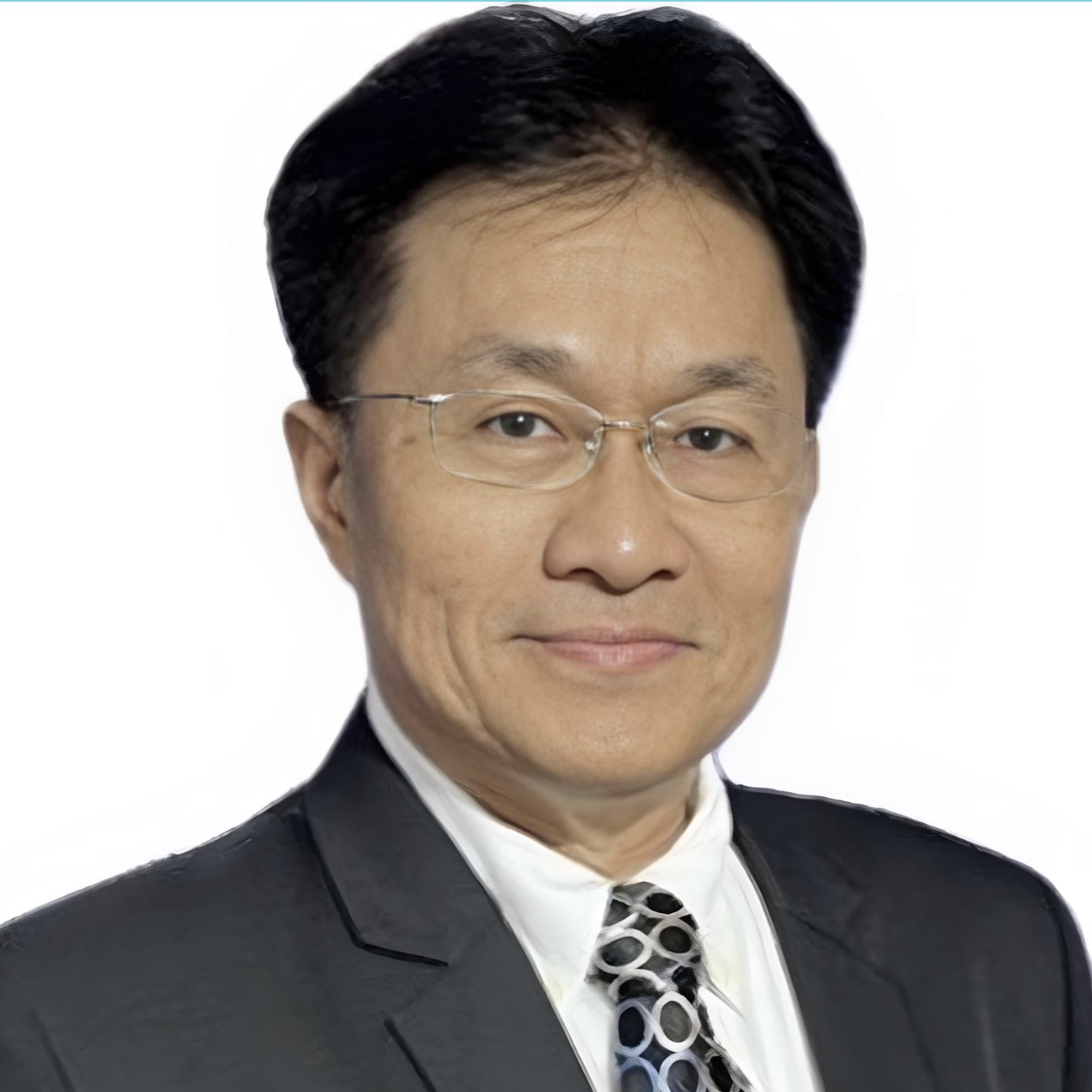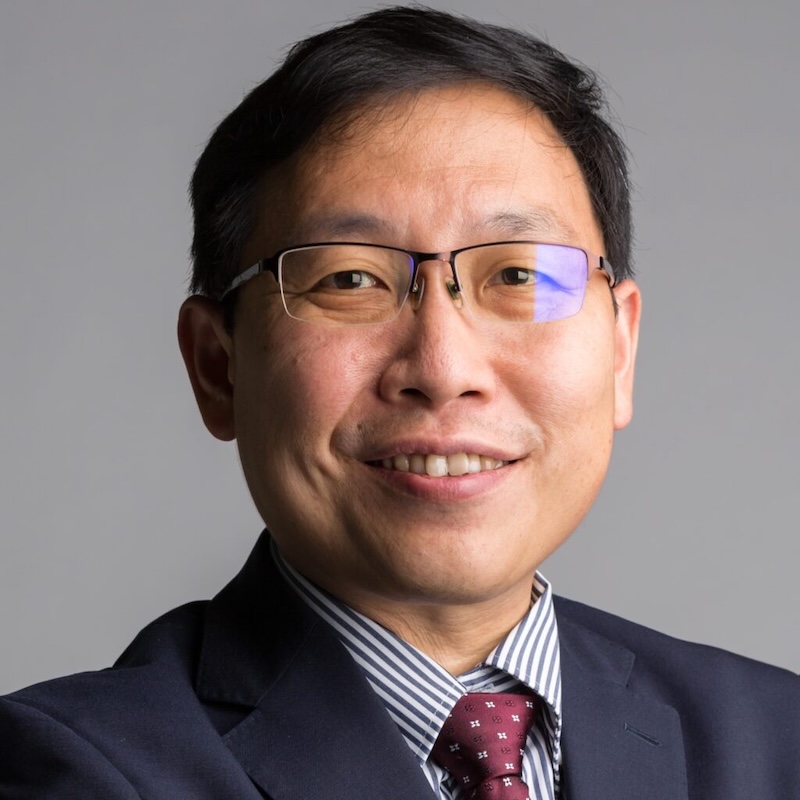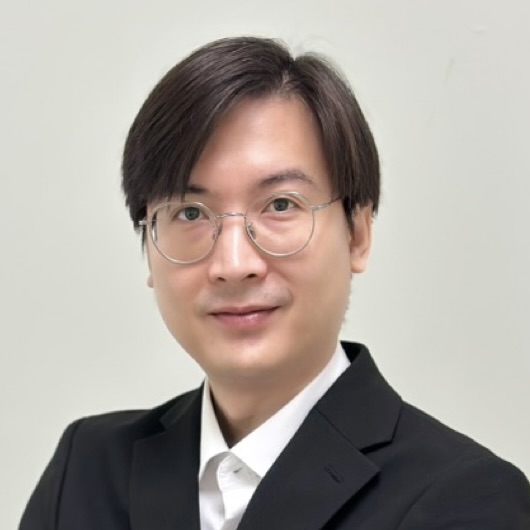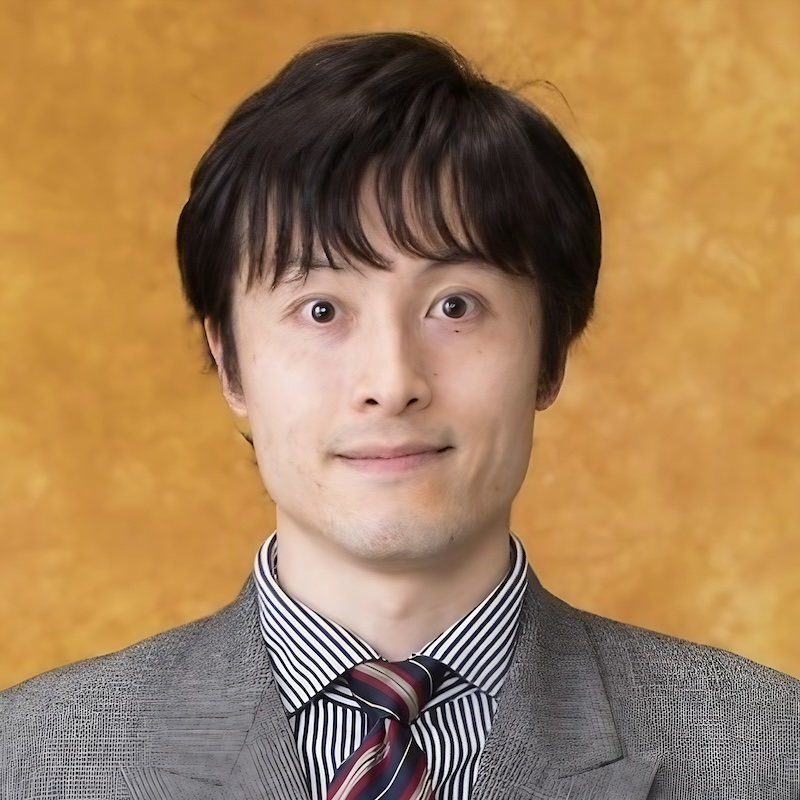Speaker Details

Prof. Athikom Roeksabutr
Mahanakorn University of TechnologySenior Vice President, Mahanakorn University of Technology, Bangkok, Thailand
President, Electrical Engineering Academic Association (Thailand) – EEAAT
Photonics roles in data centers
Abstract
Data center plays an important role in informatics and network nowadays. It is essentially a hub for data storage, processing, and management, supporting various applications and services. Several technologies are required to build a powerful data center. One important technology includes the optical communications. This talk introduces the roles of Photonics technology being used in data centers. Some specific applications of photonics in data centers include optical fiber cables, silicon photonics, optical switches, and photonic integrated circuits. These technologies are helping data centers become faster, more efficient, and more scalable. Hugh quantity of data requires high speed data transfer. Since optical signals can transmit data at incredibly high speeds (up to 400 Gbps or more) over long distances with minimal signal degradation, the technology of the optical communication is also introduced.
Biography
Athikom Roeksabutr received the B.Eng. in Electrical Engineering from King Mongkut’s Institute of Technology, Ladkrabang, Thailand, in 1985, the MSEE from Florida Institute of Technology, USA, in 1989, and Ph.D. in Electrical Engineering major in Optical Communication from University of New South Wales, Australia, in 1996. He has been a lecturer with the Faculty of Engineering at Mahanakorn University of Technology, Bangkok, Thailand since 1990. He is an associate professor in Telecommunication Engineering. He is currently the President of the Electrical Engineering Academic Association (Thailand) of which he is one of the founders. He has been the Chairman of the Technical Committee of Thai Industrial Standards Institute, Ministry of Industry, taking charge in producing the National standards for optical fiber cables and other optical products in telecommunication for more than 20 years. His research interests include optical technology and applications, photonics solutions, STEM educations, and etc.

Dr. Khanistha Leetang
National Institute of Metrology, ThailandEstablishing a Reliable Wind Speed Calibration Infrastructure Using Laser Doppler Anemometry
Abstract
Airspeed measurement is a critical parameter in numerous applications, including wind energy evaluation and meteorology. To support these applications, a reliable airspeed calibration system has been developed for calibrating anemometers over a measurement range of 0.1 to 40 m/s, achieving a Calibration and Measurement Capability (CMC) of 0.5%. This system utilizes a Laser Doppler Anemometer (LDA) as the reference standard, employing oil particles as flow tracers within the test section.
Ensuring the reliability and traceability of the calibration results necessitates the calibration of the LDA itself. A rotating disk apparatus was implemented to generate traceable reference velocities by simulating the motion of oil particles. A fine wire with a diameter of 24 µm was traversed through the laser fringe pattern to ascertain the fringe spacing and calculate the instrument’s calibration factor, referred to as the k-factor.
To validate the system’s reliability, the experimentally derived k-factor was compared against the reference value provided by the Physikalisch-Technische Bundesanstalt (PTB). The En ratio was computed to assess measurement compatibility between the two systems. The En ratio was found to be less than 1, which is a necessary criterion for compatibility.
Biography
Khanistha Leetang is a researcher at the National Institute of Metrology (Thailand), specializing in flow measurement and ultrasonic metrology. She holds a degree from the Tokyo Institute of Technology, Japan, where she developed a strong foundation in precision measurement and instrumentation. Her primary research interests include airspeed measurement using laser Doppler anemometry (LDA) and the development of reliable wind speed calibration systems to support national and international standards. In addition to her work in flow metrology, she is actively involved in ultrasonic testing (UT) research for non-destructive testing (NDT) applications, bridging the fields of mechanical integrity and advanced sensing.
She has published academic papers in reputable journals and conferences, including the Japanese Journal of Applied Physics (JJAP) and IEEE Xplore, contributing valuable research to the scientific community.

Prof. Woon-Seng Gan
Nanyang Technological University, SingaporeSpatial Audio Intelligence
Abstract
In our quest to endow machines with human-like auditory awareness, spatial audio intelligence emerges as a vital frontier—transforming raw acoustic signals into structured understanding of “what” is sounding, “where” it is occurring, and eventually “why.” This keynote explores the evolution from traditional spatial audio representations to modern data-driven systems capable of interpreting complex auditory environments.
We begin by revisiting the foundational elements of Sound Event Localization and Detection (SELD), which jointly capture sound content and spatial directionality. As detailed in recent reviews, deep learning models have revolutionized SELD by leveraging multichannel formats like First-Order Ambisonics and MIC arrays to extract rich directional cues. Hybrid neural architectures such as CRNNs and attention-based Conformers now form the backbone of modern SELD systems, enabling real-time event localization in polyphonic and noisy settings.
The talk will then delve into key challenges—polyphonic overlaps, domain shifts, and the compute cost of edge deployment—before introducing state-of-the-art innovations such as track-wise multi-ACCDOA output formats, data-efficient learning paradigms (e.g., semi-supervised and few-shot learning), and adaptive representations that handle real-world complexity. We highlight how spatial audio intelligence is evolving beyond detection and localization toward contextual understanding, integrating 3D distance awareness, human activity inference, and multimodal fusion (e.g., audio-visual SELD and wearable sensors).
Concluding with future directions, we emphasize the need for scalable, explainable, and energy-efficient SELD systems that can operate in dynamic environments—be it smart cities, immersive media, or ecological monitoring. This journey from spatial representation to intelligent auditory understanding marks a transformative shift toward true machine hearing.
Biography
Woon-Seng Gan is a Full Professor of Audio Engineering and Director of the Smart Nation TRANS (national) Lab in the School of Electrical and Electronic Engineering at Nanyang Technological University, Singapore. He received his BEng (1st Class Hons) and Ph.D. degrees, both in Electrical and Electronic Engineering from the University of Strathclyde, the UK in 1989 and 1993, respectively. He has held several leadership positions at Nanyang Technological University, including serving as the Head of the Information Engineering Division from 2011 to 2014, and as the Director of the Centre for Info-comm Technology from 20016 to 20019. His research has been concerned with the connections between the physical world, signal processing, and sound control, which resulted in the practical demonstration and licensing of spatial audio algorithms, directional sound beams, and active noise control for headphones and open windows. He has published more than 450 international refereed journals and conference papers, co-authored three books, and has translated his research into 6 granted US patents. He is a Fellow of the Audio Engineering Society (AES); a Fellow of the Institute of Engineering and Technology (IET); and elected as the IEEE Signal Processing Society Distinguished Lecturer. He served as an Associate Editor of the IEEE/ACM Transaction on Audio, Speech, and Language Processing (TASLP; 2012-15); Senior Area Editor of the IEEE Signal Processing Letters (SPL, 2019-24); and serving as the Associate Technical Editor of the Journal of Audio Engineering Society (JAES; 2013-24); Senior Editorial member of the Asia Pacific Signal and Information Processing Association Transaction on Signal and Information Processing (ATSIP; 2011-) and Associate Editor of the tier-1 IEEE Signal Processing Magazine (SPM; 2025-). He is also elected as a member of the prestigious IEEE Audio and Acoustic Signal Processing technical committee to drive audio /acoustic activities in the IEEE signal processing community. He is currently the President of the Asia Pacific Signal and Information Processing Association (APSIPA).

Dr. Thanin Methiyothin
Burapha University, ThailandAdvancing Proactive Public Health through Convergence Research: KISTI’s Expanding Role in Global Epidemiological Collaboration
Abstract
As the world continues to face emerging and re-emerging infectious diseases, the need for proactive, data-driven public health systems has never been more urgent. The Korea Institute of Science and Technology Information (KISTI) has responded to this call by expanding its research agenda beyond emergency pandemic response to long-term, strategic epidemiological preparedness. Through a series of Convergence Research Projects, KISTI has integrated high-performance computing, AI, big data analytics, and biomedical science to address the complex challenges of infectious disease prevention and control.
This keynote will highlight KISTI’s continued evolution from its critical role during the COVID-19 pandemic to broader research initiatives tackling viral emergence, cross-border disease transmission, and global health threats. Emphasis will be placed on the institute’s collaborative work with international partners, including joint research with institutions in Southeast Asia and Thailand, aimed at enhancing regional health security and scientific exchange.
Attendees will gain insights into how KISTI’s multidisciplinary approach is shaping the future of epidemiological research—leveraging technologies such as real-time mobility data, multi-source disease surveillance, and simulation-based policy modeling. The talk will also outline strategies for fostering transnational collaboration and building resilient, science-driven health systems through open innovation and knowledge-sharing.
Biography
Dr. Thanin Methiyothin is a Thai researcher and lecturer specializing in Artificial Intelligence, Bioinformatics and Machine Learning. He is currently working as a lecturer at the Faculty of Informatics, Burapha University, Thailand.
He earned his Ph.D. in Applied AI from the University of Science and Technology, KISTI Campus (Korea Institute of Science and Technology Information) in South Korea in 2024, with a dissertation focusing on the comparative cluster analysis of disease transmission during pandemics in South Korea and Thailand. He also holds a Master’s degree in Management Information Technology and a Bachelor’s degree in Business Computer from Burapha University.
Dr. Thanin has more than a decade of industry experience in ERP project management and business software development. He has overseen implementations in diverse sectors including manufacturing, hospitality, energy, and retail. He is also certified in Microsoft Dynamics and SQL Server technologies.
In the academic and research domain, Dr. Thanin has authored international journal and conference publications in areas such as disease modeling, AI-based vaccine safety analysis, and intelligent environmental monitoring. His work integrates interdisciplinary approaches to AI and data science, contributing to both public health and problem solving.

Prof. Prajaks Jitngernmadan
Faculty of Informatics, Burapha University, ThailandDigital Twin in Manufacturing
Abstract
Digital Twin (DT) technology represents a paradigmatic shift from traditional mathematical modeling toward dynamic, real-time simulation of manufacturing systems within Industry 4.0 frameworks. Unlike conventional simulation models that utilize scenario-based inputs, Digital Twins establish AI-model based simulation enabling exchange between physical objects and virtual objects through real-time data synchronization and simulation capabilities.
The architectural framework encompasses three fundamental layers: the Physical Layer incorporating sensors and IoT devices for real-time data collection, the Communication Layer facilitating data integration through protocols such as MQTT and HTTP, and the Digital Layer comprising AI models, platforms, and 3D visualization components. This multi-layered architecture enables real-time simulation, predictive analysis, process optimization, and energy management capabilities superior to traditional mathematical approaches.
Digital Twin implementation follows a systematic three-phase methodology: strategic sensor placement and data acquisition infrastructure establishment, long-term data collection spanning 3-12 months with comprehensive data preparation and AI model training, and simulation-based parameter adjustment for continuous manufacturing process optimization.
The ETAT project (Education & Training for Automation 4.0 in Thailand) at Burapha University exemplifies practical Digital Twin implementation in educational contexts. The ETAT Training Center addresses critical automation knowledge gaps within Thai enterprises through hands-on training in advanced automation technologies. The EEC Automation Park at Burapha University demonstrates Digital Twin applications for real-time factory monitoring, data analysis, and production line optimization prior to physical implementation, significantly reducing costs and production timeframes.
Current research encompasses optimal communication protocols for automation industries, AI models for process data analysis, and industrial AR applications. Digital Twin technology fundamentally transforms manufacturing methodologies through real-time data integration, predictive analytics, and continuous optimization capabilities, positioning it as essential for achieving operational excellence and sustainable manufacturing practices in increasingly complex industrial environments.
Biography
Prof. Prajaks Jitngernmadan is a faculty member at the Faculty of Informatics, Burapha University, Thailand. He holds a Ph.D. in Engineering Sciences from Johannes Kepler University Linz, Austria, as well as M.Sc. and B.Sc. degrees in Electrical Engineering and Information Technology from Düsseldorf University of Applied Sciences, Germany. Dr. Prajaks' research interests include digital twin technology, augmented and virtual reality, artificial intelligence in industry, human-computer interaction, and industrial automation. He is recognized for contributions to VR industrial training, AI-based manufacturing process solutions, and digital twin in manufacturing implementations. He is actively involved in curriculum development for AI in Automation 5.0 and serves as a key member of the ETAT consortium and international education network, EduNet, in Thailand.

Prof. Masumi Taki
The University of Electro-Communications, JapanFrom One-Shot Cures to Cell-Force Sensors: Toward a Drug-Free Tomorrow
Abstract
Digital technologies—AI, data science and large-scale simulation—form a formidable hard, dry sword that can already slash billion-scale chemical spaces. Yet the toughest problems in medicine still require a matching soft, wet sword: hypothesis-driven experimentation. This keynote introduces a “Nitoryu” (two-sword) workflow that fuses the two in rapid feedback loops.
I will spotlight an ultrafast platform for discovering biological targeted covalent inhibitors (bioTCIs) for one-shot cures: up to 10^14 DNA sequences compressed into one selection round and refined by bioinformatics prediction, namely ARCaDia [1]. My personal missteps—such as battling hundreds of gigabytes of high-throughput screening data in Excel—and subsequent fixes underline why theory without benchwork is hollow, and benchwork without data is blind.
Success stories from UEC students show how quickly newcomers can cross disciplines and become dual-skilled Nitoryu researchers. Their expertise is now coveted across drug discovery, biotech and AI healthcare. Attendees will leave with a playbook for pairing code and pipette to accelerate safer, smarter therapies—and move one step closer to a drug-less tomorrow.
[1] M. Taki et al., Chem. Commun., 2024, 60, 14964.
Biography
Masumi Taki is Professor and Vice-Chair of Engineering Science at the University of Electro-Communications (UEC), Tokyo, where he has led the Chemical Biology Laboratory since 2011. Following successive JSPS Research Fellowships at Gunma, Okayama and the University of Tokyo (1996–2002), he served at the National Institute of Advanced Industrial Science and Technology (AIST), GenoFunction Inc., and Okayama University. Taki pioneered the Affinity/Reactivity Co-selection (ARC) platform for rapid discovery of biological targeted covalent inhibitors (bioTCIs), integrating organic synthesis, molecular evolution and drug-discovery chemistry. He was a Visiting Researcher at Caltech (2007–2008), Visiting Professor at ETH Zürich (2017), and has been a Visiting Lecturer at Nihon University since 2018. He has authored seven journal-cover articles in ACS and RSC titles, holds multiple patents related to bioTCIs, and received the 2024 JSME Robotics and Mechatronics Division Award for Excellence in Interdisciplinary Research.

Prof. Hoang Trong-Thuc
The University of Electro-Communications, JapanOpen-Source EDA and PDK in VLSI Design: Status, Challenges, and Opportunities in the Semiconductor Industry
Abstract
The semiconductor industry is witnessing a significant shift towards open-source Electronic Design Automation (EDA) and Process Design Kit (PDK) development, driven by the need for collaborative innovation, cost reduction, and faster time-to-market. In this talk, we will introduce the current status of open-source EDA tools and PDKs in the VLSI design community, highlighting their capabilities, limitations, and potential applications.
By exploring the rapidly evolving landscape of open-source EDA and PDKs, this talk aims to provide a comprehensive overview of the current state of the art, identify areas for future research and development, and stimulate discussion among stakeholders on the future of VLSI design in the semiconductor industry.
Biography
Trong-Thuc Hoang received a B.Sc. degree and an M.S. degree in Electronic Engineering from the University of Science (HCMUS), Ho Chi Minh city, Vietnam, in 2012 and 2017, respectively. In 2022, he graduated from the University of Electro-Communications (UEC), Tokyo, Japan, with a Ph.D. degree in Engineering. From 2012 to 2017, he was a lecturer assistant at HCMUS. From 2019 to 2020, he was a research assistant at UEC. From 2019 to 2022, he was a research assistant at the Cyber-Physical Security Research Center (CPSEC), National Institute of Advanced Industrial Science and Technology (AIST), Tokyo, Japan. Since April of 2022, he has been an assistant professor at the Department of Computer and Network Engineering, UEC, Tokyo, Japan. His research interest mainly focuses on digital signal processing, computer architecture, cyber-security, ultra-low power circuit, and system-on-chip.
